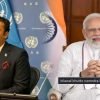ISLAMABAD: 16th December, 1971 is one of the worst dates in the history of Pakistan, when Indian conspiracies and the betrayal of some Pakistanis led to the separation of east Pakistan and broke the largest Islamic country of the world into two parts.
The 49th anniversary of Fall of Dhaka is being observed today (Wednesday) with a note of melancholy and dissension which had led to that debacle.
On December 16, 1971, Indian Army in collaboration with Mukti Bahini, an armed wing of the Bengali separatists occupied Dhaka after a long resistance.
It’s difficult to forget this day when the biggest country of the Islamic world faced a ruthless division.The creation of Bangladesh is one of the most sensitive and tragic chapters in the history of Pakistan. While the trauma of partition may now be behind us, stories of 1971 still raise hackles among anyone who lived through that era.
People received with awe the news of East Pakistan’s position on December 16, an Indian army battalion entered Dhaka at 10.40am (09.40am PST). As agreed the evening before, Pakistani commander, General Niazi, in the morning had sent a message to the troops at the borders to cease fire.
Indian army had also received instructions to stop fighting after the completion of negotiations between General Niazi and Indian commander, General Manekshaw. Radio signals were sent to all fronts.The chief of Pakistani forces sought extension in the suspension of air operations by Indian Air Force to facilitate talks. The Indian General appeared happy and agreed to the suspension.
Even the ground operations were ordered to be stopped by 1.00pm (12.00noon PST). Indian eastern commander, General J F R Jacob, began holding meetings with Pakistani commanders showing them the draft of the surrender document.
After clause-by-clause vetting and exchange of views, Pakistani officials accepted the terms of the Instrument of Surrender which was initialed at 02.45pm (01.45pm PST) and the top officials were informed accordingly.
Ramna Racecourse, where Shaikh Mujibur Rahman had made a historic speech to launch the freedom movement for Bengal and where the Bangladesh flag was hoisted, was chosen for signing the documents of Surrender which was conducted at 04.30pm (03.30pm PST).
“In the early afternoon, General Niazi drove to Dhaka airport to receive Lt General Jagjit Singh Aurora, Commander of the Indian Eastern Command. He arrived with his wife by helicopter.
A sizeable crowd of Bengalis rushed forward to garland the General and his wife. General Niazi gave him a military salute and shook hands with him,” wrote Abdul Ghafoor Bhurgri, who himself later became a prisoner of war (POW).
General Niazi of Pakistan and General Aurora of India signed the Instrument. Neither of the two uttered a single word.
The document was a normal one, including assurance to the surrendering personnel that they would be “treated with dignity and respect that soldiers are entitled to in accordance with the provisions of Geneva Convention and guarantees the safety and well-being of all Pakistan military and paramilitary forces who surrender.
Protection will be provided to foreign nationals, ethnic minorities and personnel of West Pakistan origin by the forces under the command of Lieutenant General Jagjit Singh Aurora”. The Instrument did not mention the fate of Biharis in East Pakistan or Bengalis in West Pakistan.After the signing of the Instrument General Niazi handed over his pearl-studded pistol and lanyard to General Aurora and removed his badges.
General Niazi, General Farman Ali, Rear Admiral Sharif, Major General Mohammad Hussain Ansari, Major Gen Nazar Hussain Shah, Major Gen Mohammad Jamshed, Major Gen Qazi Abdul Majid, Air Commodore Inamul Haq all were interned at Jabalpur camp, while others were sent to some 100 odd camps all over India.
Some writers put the figure of surrendered people to 93,000 but according to Hamoodur Rahman Commission, about 90,368 were made Prisoners of War (POWs), including 54,154 Army soldiers, 1,381 Navy personnel, 833 Air force staff, paramilitary including police personnel consisted 22,000, and 12,000 civilians government employees and their dependents from West Pakistan.Although ceasefire became effective with the signing of the surrender instrument, the hostilities officially came to an end on 08.30pm (07.30pm PST) on December 17.
As Pakistanis waited for the report, India and Bangladesh set up Prisoners of War camps at places wherever Pakistani troops surrendered. These camps were later shifted to India.
From these camps, Indian authorities used to broadcast the messages of internees for their families with the hope that if someone from the family or a friend was listening, he could communicate the message to the family, mostly about the prisoner’s welfare.
The second mode of communication was the International Committee of Red Cross (ICRC) which facilitated most of the messages for POWs from 1972 till the release of POWs in 1974.
Various political, social, cultural and educational institutions will organize public meetings, seminars and symposium to observe the tragic



